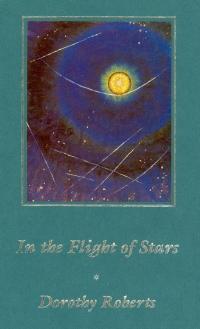Dorothy Gostwick Roberts

Dorothy Gostwick Roberts (poet) was born on 6 July 1906 in Fredericton, New Brunswick. She published seven volumes of poetry, all with an emphasis on landscape. Her poems centre on the themes of nature, the passage of time, alienation, and northern landscapes.
Roberts was the daughter of poet Theodore Goodridge Roberts and Frances Allen Roberts. Her uncle was renowned Canadian poet Charles G.D. Roberts. Her parents had three other children: William Goodridge, and Theodora and Loveday, who died as infants. As a child, her family spent time moving from place to place because of her father’s work as a special correspondent during the Spanish American War. Some of the places she lived were England, France, Ottawa, and Toronto. Her family settled back in Fredericton in her early teens. She attended school in Fredericton and later enrolled at the University of New Brunswick. Her family farmed, and so Roberts grew up surrounded by the bounty of New Brunswick, which in turn prompted her to start writing poetry. And despite the fact that she spent most of her adult life in the United States, her poetry is rooted in New Brunswick. As she has said, “Fredericton was a town carefully outlined with what you did and did not do according to your allotted role” (The Self of Loss 7). Her role, in other words, was to continue the family tradition of writing.
Roberts became a reporter for the Fredericton Daily Mail, and sold stories to different publications. She married August R. Leisner in 1929, and moved to the United States with him in 1940. The couple lived in Ithaca, New York for five years, then settled in Pennsylvania, where Leisner was an English professor at a state college. The couple had two children, daughter Anne, born in 1931, and son John, born in 1937. During the years of 1938–1954, Roberts penned a novel that to this day remains unpublished. She had more success with poetry. Her first book of poetry, Songs for Swift Feet, was a chapbook released under her middle name Gostwick. Using a masculine-sounding name, or initials, was common for female writers of the time in an effort to be taken seriously in a male-dominated field. 250 copies of Songs for Swift Feet were printed, and some of the poems in it were also published in the London Bookman, Munsey’s Magazine, and the Canadian Bookman. The book features sixteen short poems, which centre on images of nature, such as “the poplars, high and cold; now chills the sky to blue, thin blue with old gaunt trees against its edge” (3). She would continue to write this kind of post-Confederation “nature” poetry for her entire career.
Roberts’ favourite subjects, says critic Lahey, were the ordinary objects that appeared in and around New Brunswick: “[her] most recurrent images—apple, tree, river, farm, house, stars, woods, island, boat—are clearly shaped, ordinary objects and places that assure us of our reality, our physicality, and our limitations” (96). There is a recurring theme of consciousness in her poems, such as “Memories,” which recounts the different feelings and associations brought back by past memories. Also, in her poem “The Exile,” the sense of a persuading consciousness is displayed in the line, “When I am gone I’ll not forget the spruce-top’s jet against a sky as blue as sleep” (4). Her style is geared toward the use of imagery, painting pictures in the mind of the reader. Her poetry was once said by Fred Cogswell to be among the best in New Brunswick (qtd. in Hughes).
Her final book of poetry, In Flight of Stars, features forty-four poems that explore the wisdom of maturing and growing old, birth and death, and renewal. The book appeared in 1991, just two years before she died on 23 April 1993.
Roberts’ poetry, said another critic, “has been generally overlooked except for rare, but generous reviews, one critical analysis, and the inclusion of some of her poems in anthologies” (MacKendrick 267). Her work has also appeared in some Canadian and American periodicals and anthologies. Roberts was a member of the League of Canadian Poets and despite living outside of Canada for much of her adult life, she was a loyal daughter of her home province until her death.
Erin Watling, Spring 2010
St. Thomas University
Bibliography of Primary Sources
Roberts, Dorothy. Dazzle. Ryerson Poetry Chapbooks 15. Toronto: Ryerson Press, 1957.
---. Extended. Fredericton, NB: Fiddlehead Poetry Books, 1967.
---. In Star and Stalk. Emblem Books 6. Toronto: Emblem Books, 1959.
---. In the Flight of Stars. Fredericton, NB: Goose Lane Editions, 1991.
---. The Self of Loss: New and Selected Poems. Fredericton, NB: Fiddlehead Poetry Books, 1976.
---. Songs for Swift Feet. Toronto: Ryerson Press, 1927.
---. Twice To Flame. Toronto: Ryerson Press, 1961.
Bibliography of Secondary Sources
Hughes, Alison. “Poetic Nature.” Telegraph-Journal [Saint John, NB] 24 Apr. 1999.
Lahey, Anita. “Dazzling Exile: The Poetry of Dorothy Roberts.” Arc Poetry Magazine (Summer 2007): 87-98.
MacKendrick, Louis K. “Dorothy Roberts”. Canadian Writers, 1920–1959. 2nd Ser. Ed. William H. New. Dictionary of Literary Biography 88.0 (1989). 266-7.
Roberts, Lloyd. The Book of Roberts. Toronto: Ryerson Press, 1923.
“Theodore Goodridge Roberts.” The Macmillan Dictionary of Canadian Biography. 3rd ed. 1963.


